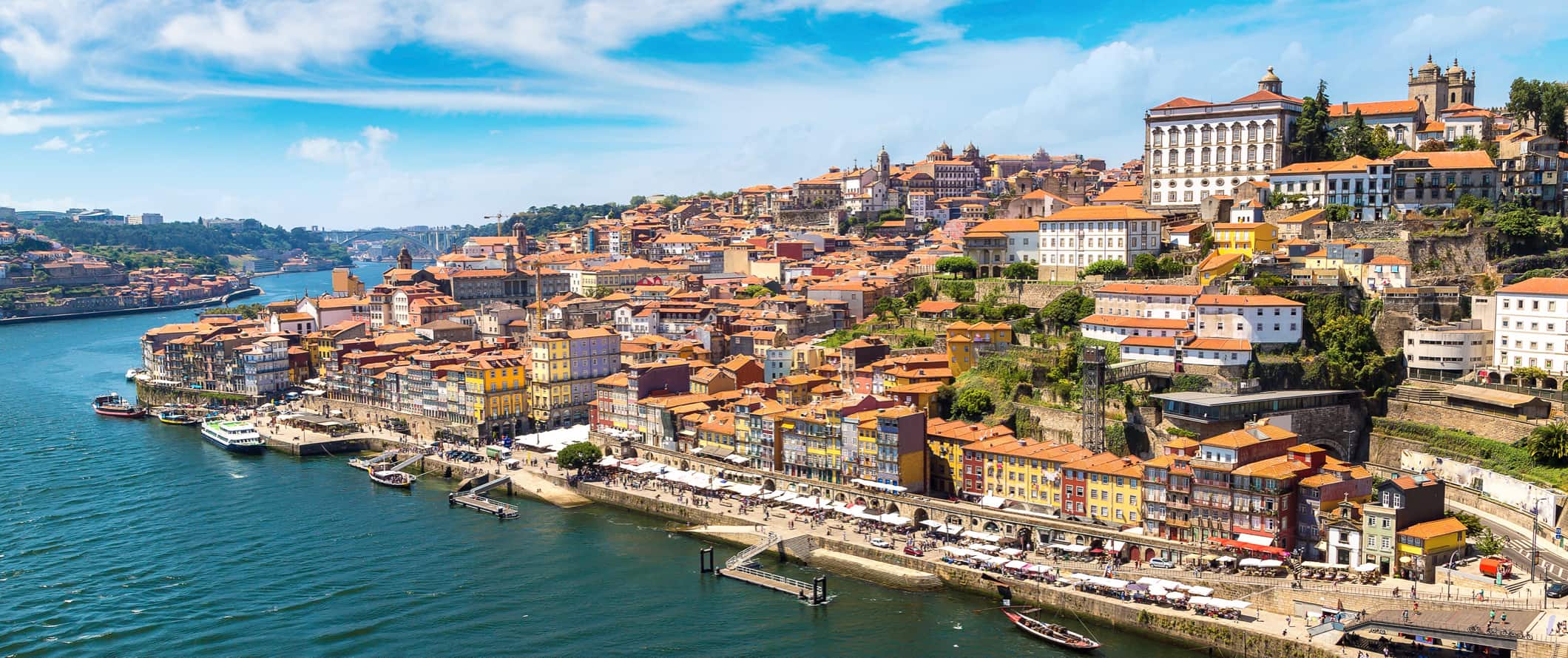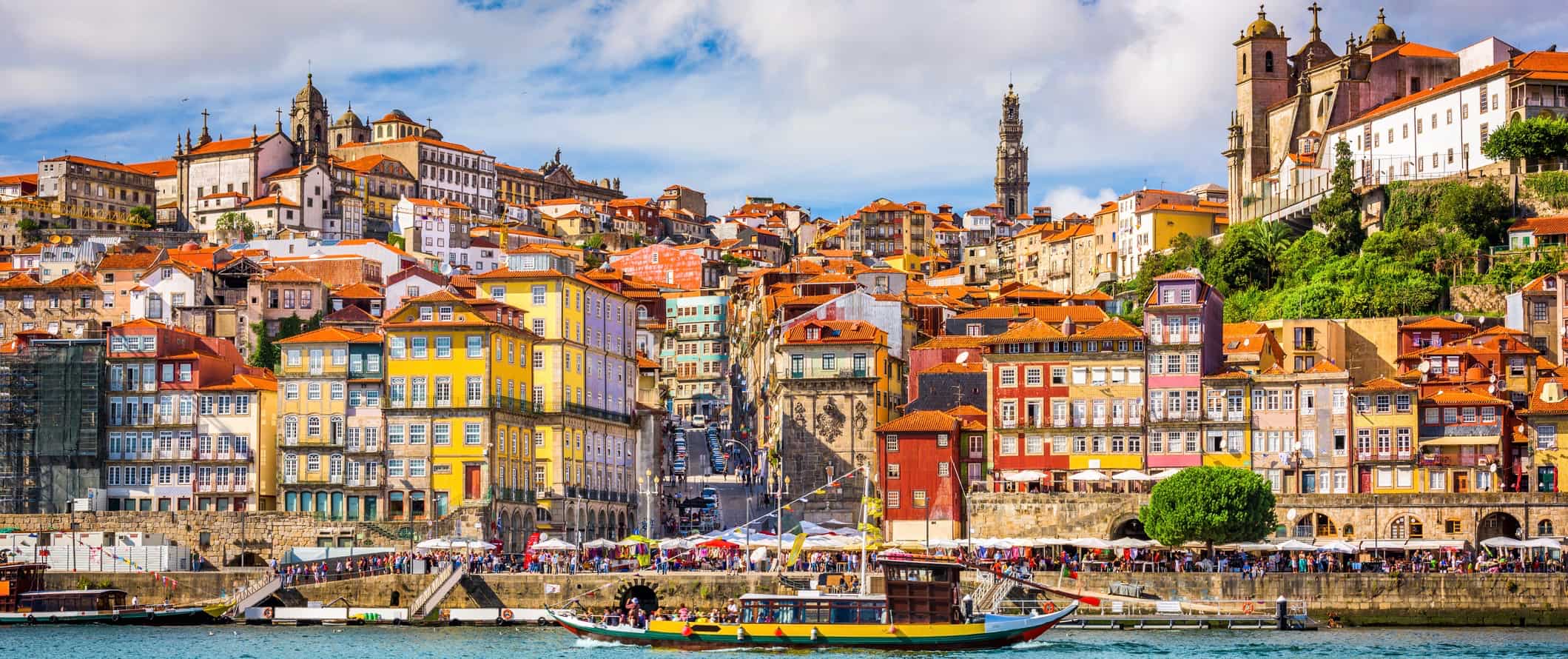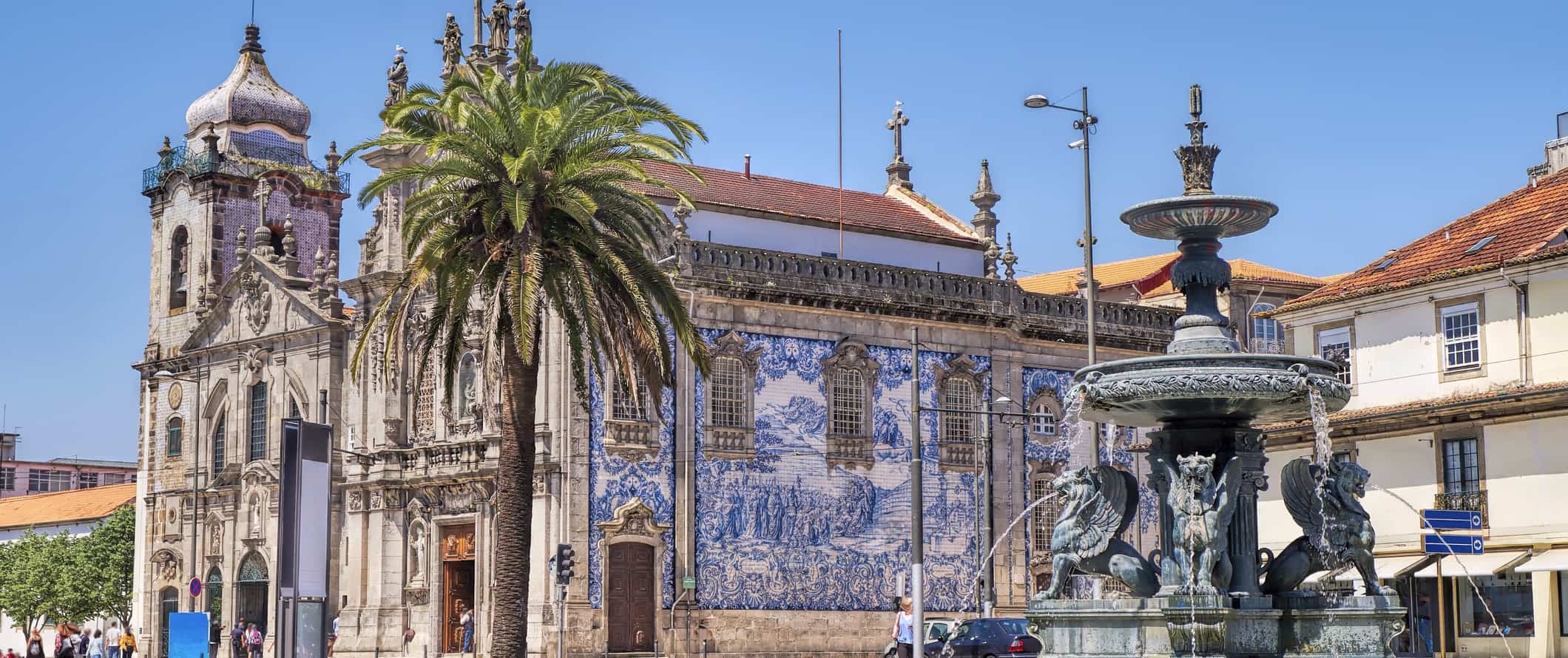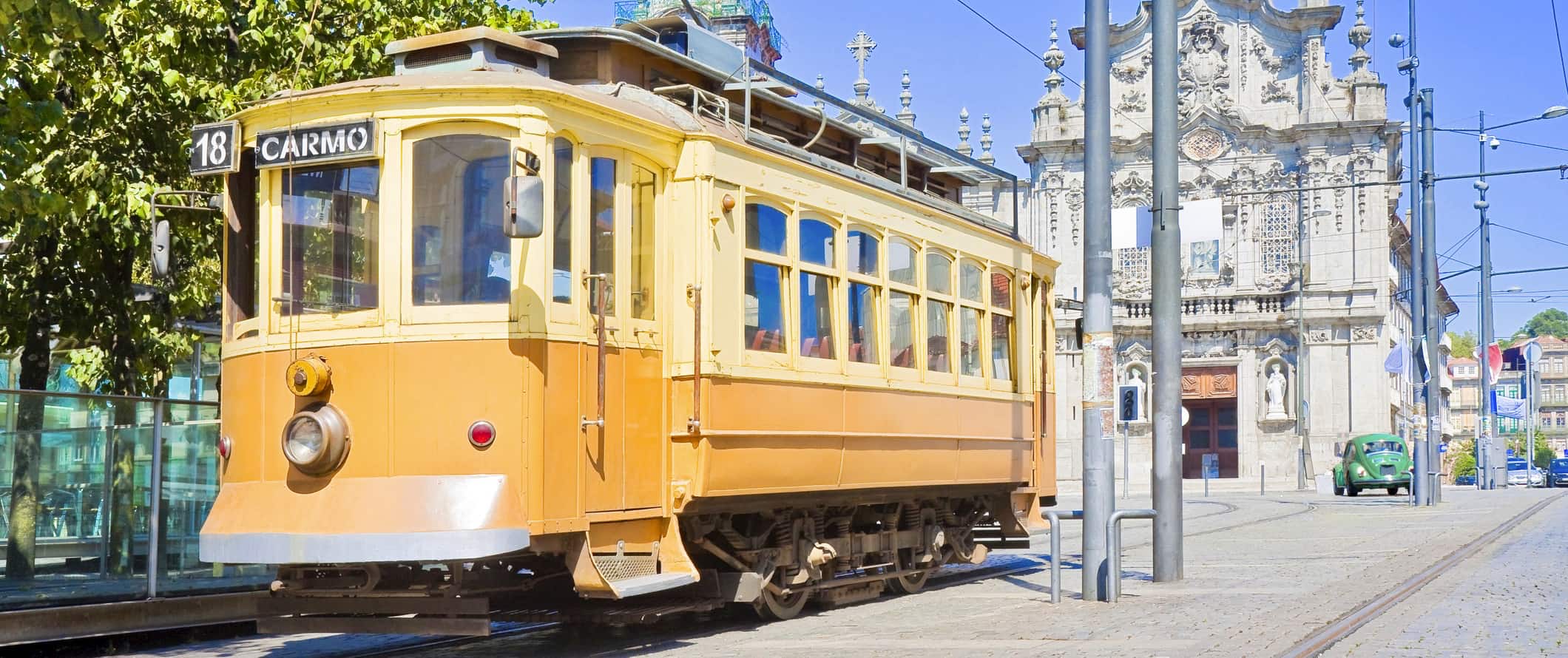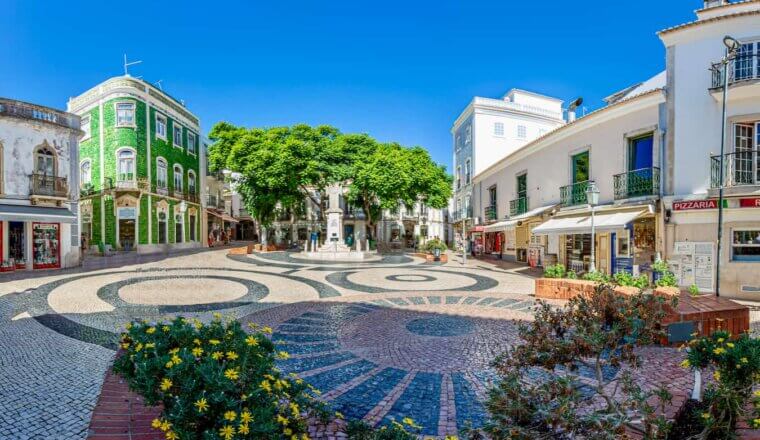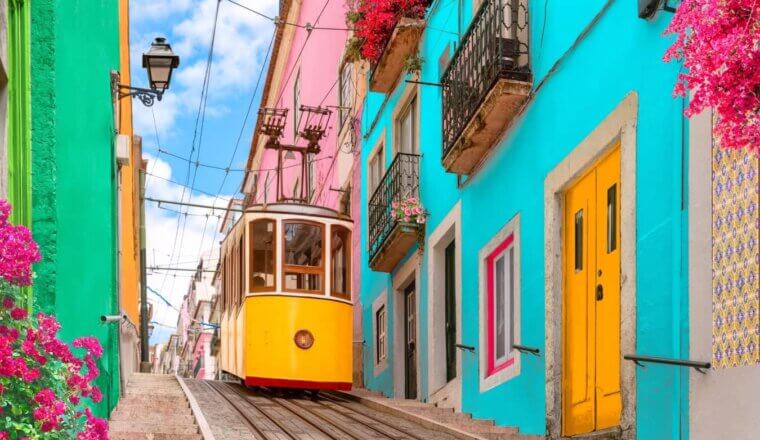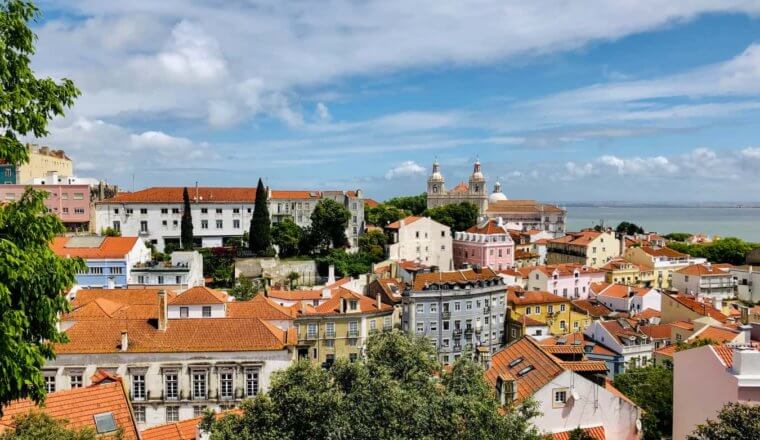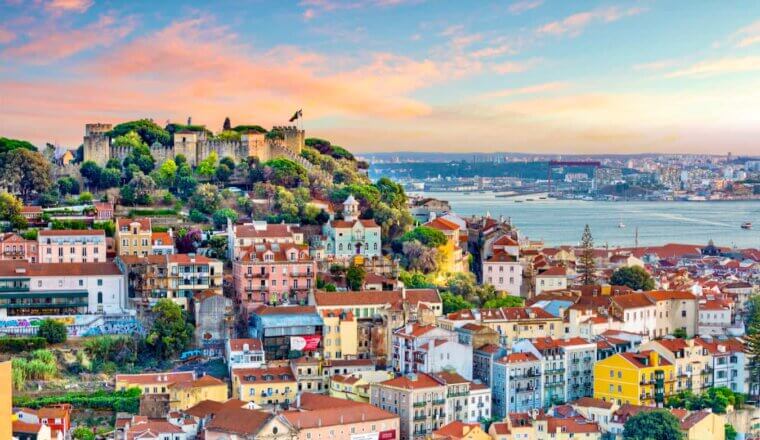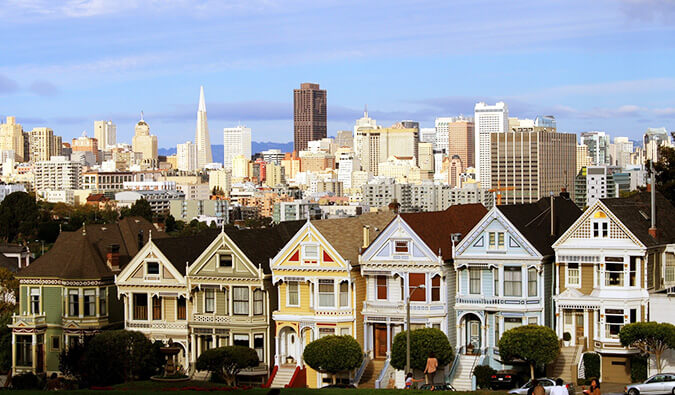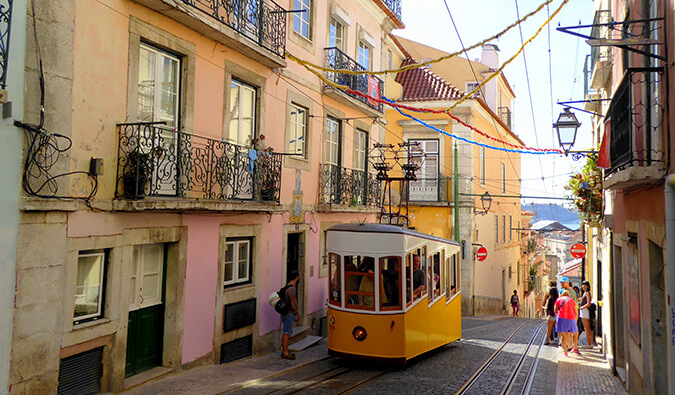Sitting at the mouth of the Duoro River, Porto is Portugal’s second-largest — and second-most-popular — city. It’s the home of Port wine, which became popular after the 17th century, and you can find plenty of places to sample this popular dessert wine all around the city.
While Porto lacks the iconic “wow!” factor of Lisbon, I still think it’s a beautiful riverside city filled with lots of good food, plentiful wine, and cozy riverfront cafes.
Moreover, this is the best place to start your trips to the nearby Douro Valley, where you can explore and tour the region’s famous port vineyards. It’s also one of the main launching grounds for the Camino Portugues (a multi-day hike to Santiago de Compostela in Spain), making it a popular hub for hikers and pilgrims alike.
This travel guide to Porto will help you plan your trip, save money, and make the most out of your visit here!
Table of Contents
Top 5 Things to See and Do in Porto
1. Wander the Jardins do Palácio de Cristal
This is a free 24-acre botanical garden in the center of Porto. The gardens were designed in the late 1800s and include an avenue of lime trees, walking paths along the river, and a space for concerts and exhibitions. There are also sculptures, fountains, and olive trees scattered around as well. It’s one of the best places in the city to relax, people-watch, and take in the view of the river.
2. Cruise the Douro River
For a relaxing break from the city, take a boat trip up the Douro River. The river stretches some 897 kilometers (557 miles) into Spain, though tours focus almost exclusively on the section around Porto where the city’s six famous bridges can be seen. During an hour-long cruise, you’ll pass under the city’s six massive bridges that span the river while learning a bit about the history of the city. Living Tours offers a scenic hour-long cruise for just 15 EUR.
3. Take a tour of the Douro Valley
Port, a sweet dessert wine, hails from this region, and the mountainous Douro Valley is filled with small family-owned wineries. These wineries are all high up in the hills, offering jaw-dropping views as you sip your wine. If you don’t have your own vehicle, full-day wine tours usually last around 8-10 hours and include multiple stops, lunch, and usually a river cruise as well. Get Your Guide runs a popular full-day tour for 95 EUR that visits two wine estates and includes lunch and a cruise.
4. Admire the city’s azulejo art
Introduced by the Moors (Muslims from North Africa who conquered parts of Europe), this traditional ceramic tilework dates to the 13th century. The artwork usually tells a story, often about the history or daily lives of the people of Porto. Igreja de Santo Ildefonso, Capela das Almas, and the port Cathedral are some of the best places to see this traditional art up close.
5. Visit Livraria Lello
Opened in 1906 by the brothers José and Antonio Lello, this stunning bookstore is said to be the inspiration for the Hogwarts library in Harry Potter. One of the oldest bookstores in Portugal, it features a red-carpeted staircase, stained-glass windows, and a neo-Gothic design. Stop by to snap some photos and browse their massive collection. It’s hands-down one of the most beautiful bookstores in the world.
Other Things to See and Do in Porto
1. Take a free walking tour
The first thing I do when I arrive in a new city is take a free walking tour. It’s the best way to get the lay of the land, see the main sights, and connect with a local guide who can answer all your questions. Porto Walkers runs daily free tours that cover all the highlights. Just be sure to tip your guide at the end!
2. Visit the Stock Exchange Palace
Known as the Palácio da Bolsa, this palace was built in 1842, taking over three decades to complete. The building and its cathedral were designed in the Neoclassical style and are both a UNESCO World Heritage Site and a National Monument. The palace was originally intended to showcase Portugal’s economic might. The interior is ornate and entirely covered from floor to ceiling with paintings, sculptures, and architectural decoration. You’ll find lots of commemorations of Prince Henry the Navigator here as well (he was a 15th-century Portuguese figure central in the establishment of the country’s empire). Admission is 10 EUR.
3. Daytrip to Povoa de Varzim
The city of Povoa de Varzim is a small resort town 30 kilometers (18 miles) north of Porto. It has a wide, sandy stretch of beach where the rich locals used to sunbathe in the 19th century. The tiny town’s Praça do Almada central square has some colorful architecture, including the Neoclassical town hall from 1791. There’s not a ton to do here, but it makes for a nice place to stroll and escape the city. The one-hour bus ride from Porto costs less than 5 EUR.
4. Listen to live music at Casa da Música
This state-of-the-art concert hall is the best place in the city to see live music and theater. Built in 1999 to commemorate Porto’s designation as a European Capital of Culture, performances are held here regularly. Though most of them are in Portuguese, there are a lot of classical and jazz performances too. Ticket prices vary but check the website to see what is available during your visit as there are tons of free concerts and events.
5. Shop at Mercado do Bolhão
Bolhão Market is an eclectic local market full of fresh produce, meats, fish, bread, flowers, and local handicrafts. The market, housed in an old Neoclassical building, has been around since 1914 and is popular with locals and tourists alike. You can find pretty much everything here. If you’re cooking your own meals, it’s a cheap place to buy groceries. (Temporarily closed for renovations).
6. Watch a football match
Like the rest of Europe, the Portuguese love football (soccer). If you’re a fan of the sport, pay a visit to Dragão Stadium to take in a football match. The stadium holds over 50,000 people and FC Porto’s fans are some of the most passionate in Europe. They have huge rivalries with other Portuguese teams, so matches are always exciting and energetic. Even if you’re not a huge sports fan, it’s an amazing event to experience while you’re here.
7. Get lost in Ribeira
Porto’s old town, declared a UNESCO World Heritage Site in 1996, is full of narrow and winding medieval streets, delightful cafés, and historic architecture. Have lunch, enjoy some port, and try to get purposefully lost in the meandering alleys. It’s located along the water opposite Vila Nova de Gaia (a district in Porto) and is my favorite part of the city. Don’t miss stopping by the Casa do Infante, which is said to be the house where Prince Henry the Navigator was born in 1394 (admission is 2.20 EUR).
8. See São Francisco Church
Built in the 15th century, the Gothic Church of Saint Francis is another UNESCO World Heritage Site. Unlike its drab exterior, the interior is lavishly designed in a Baroque style. The church took around 50 years to build and almost every inch is covered in gold and ornately decorated (over 500 pounds of gold dust was used to cover everything). Below the church are catacombs and an ossuary as well. Be sure to dress appropriately as this is a place of worship. Admission is 7.50 EUR.
9. Admire Porto’s vibrant street art
Many of Porto’s buildings are beautifully decorated with street art and murals. Stroll down Rua de Miguel Bombarda, Rue da Madeira, and Escadas do Codecal (the stairs leading down to the Duoro riverfront under Luis I Bridge), and you’ll see some of the city’s coolest public art. If you want to learn more, book a street art tour. It’s the best way to see the main works and learn more about the street art scene in Porto.
10. Climb up the Clérigos Tower
Built between 1754 and 1763, this Baroque-style tower was home to the Brotherhood of the Clerigos, a 17th-century religious order. At 75 meters tall (and with 225 steps) it offers some of the best views of the city. Declared a National Monument in 1910, admission is 6 EUR and includes access to the museum, which showcases the cultural and religious history of Porto during the 18th century.
11. Visit the Soares dos Reis National Museum
This museum is home to a permanent collection of Portuguese paintings, ceramics, furniture, metalwork, and sculptures. Founded in 1833, it was the first museum in the country that focused on Portuguese art. One of the primary exhibitions is by Portuguese sculptor António Soares dos Reis, after whom the museum is named. Admission is 5 EUR.
12. Hike up to the Virtudes Garden at sunset
This vertical garden is located behind the Palace of Justice. Composed of several raised platforms, the park offers a spectacular view of the Douro River and Vila Nova de Gaia district. After a long day of touring the city, this garden is the perfect place to enjoy a few drinks, people-watch, and take in the sunset over the river. It can get busy though so arrive early. Admission is free.
13. Take a day trip to Guimarães
Located 45 minutes from Porto, this charming city was not only the first capital of Portugal, but it’s also where the first king of Portugal, Afonso Henriques, was born around 1111 CE. The city has a beautifully preserved historic center that dates to the 12th century. Some notable sights to check out Guimarães Castle, the city’s old quarter, and the Palace of the Dukes of Braganza. You can visit as part of a day trip or stay overnight to escape the busyness of Porto. You can take the bus or train for under 5 EUR each way.
For more information on other cities in Portugal, check out these guides:
Porto Travel Costs
Hostel prices – A bed in a hostel dorm with 6-8 beds costs 15-23 EUR per night. Private rooms start at 40-60 EUR (but go up as high as 120 EUR). Free Wi-Fi and lockers are standard and most hostels have kitchens too. Many also offer free breakfast.
For those traveling with a tent, camping is available outside the city for around 8-10 EUR per night for a basic tent plot without electricity.
Budget hotel prices – Two-star budget hotels near the city center start around 40-65 EUR per night. Some include free breakfast and all have free Wi-Fi.
Airbnb is a budget-friendly option in Porto with private rooms starting from 30 EUR per night (though they average double that if you don’t book early). Entire homes/apartments cost at least 60 EUR per night, though expect to pay closer to 100 EUR.
Food – Fish and seafood form the backbone of Portuguese cuisine (Portugal eats the most seafood per capita in Europe). Cod, sardinhas assadas (grilled sardines), sea bass, and shellfish are some of the most common staples. Other popular dishes include cozido à portuguesa (boiled stew), peixinhos da horta (breaded and fried vegetables), and cured ham. Be sure to also try the prego (beef sandwich) or the bifana (pork sandwich). You can find them at local cafes for around 5 EUR.
Another local favorite is francesinha. It’s a sandwich typically made with bread, ham, linguica (Portuguese sausage), and steak, with everything covered with melted cheese and a rich tomato sauce. A fried egg is placed on top of the sandwich and it’s accompanied by fries (that you dip in the sauce). It’s incredibly heavy and filling (and delicious) and should be tried at least once. Expect to pay around 9-14 EUR. For one of the best in the city, visit Bufete Fase’s.
For a cheap meal at a local café or restaurant, expect to pay between 8-10 EUR. Small baked goods and snacks cost under 5 EUR. Fast food (think McDonald’s) costs 7 EUR for a combo meal. For something more mid-range, like a three-course meal with table service and a drink, expect to pay at least 15-20 EUR.
Many restaurants offer a “Prato do Dia” (dish of the day) for around 8-11 EUR. These are usually quite filling and consist of 2-3 courses.
A beer costs 2-3 EUR while a latte/cappuccino is around 2 EUR. Bottled water is less than 1 EUR.
If you plan on cooking your own meals, a week’s worth of groceries costs around 35-45 EUR. This covers basic staples like pasta, vegetables, rice, and some meat or seafood.
Backpacking Porto Suggested Budgets
On a backpacker budget, you can visit Porto for around 45 EUR per day. On this budget, you’ll be staying in a hostel dorm room, cooking most of your meals, limiting your drinking, taking public transportation to get around, and sticking to mostly free activities like the gardens and free walking tours.
On a mid-range budget of 110 EUR per day, you can stay in a private hostel room or private Airbnb, eat out for all your meals, enjoy a few drinks, take the occasional taxi to get around, and do more paid activities like a river cruise or a wine tour.
On a “luxury” budget of 230 EUR or more per day, you can stay in a hotel, eat out anywhere you want, drink more, rent a car to get around, and do as many tours and activities as you want. This is just the ground floor for luxury though. The sky is the limit!
Porto Travel Guide: Money-Saving Tips
Porto is a cheap city in an affordable country so it’s hard to spend a huge amount unless you are splashing out at a lot of expensive dinners. Nevertheless, here are some ways to save money in Porto:
- Pick up a Porto Card – The Porto Card provides free access to around a dozen museums, 50% discounts on 14 other attractions, free public transportation, and discounts to local restaurants. The card is 13 EUR for a one-day pass, 20 EUR for a two-day pass, 25 EUR for a three-day pass, and 33 EUR for a four-day pass. If you plan on seeing a lot, get this card.
- Cook your own meals – Restaurants are cheap here, but eating out all the time can still be costly. If you’re on a tight budget, save yourself some money by buying groceries and cooking your own meals.
- Take a free walking tour – If you want to understand more about the history, architecture, and people of Porto then take a free walking tour. They last a couple of hours and are a great introduction to the city. Just be sure to tip your guide!
- Get the Andante Ticket – For unlimited rides on the bus and metro pick up an Andante ticket. It has 24-hour and 72-hour options and tickets cost 7 EUR and 15 EUR respectively.
- Stay with a local – Couchsurfing is the best way to save on accommodation in Porto. By staying with a local you’ll not only save money but you’ll get to spend time with someone who can show you the city’s hidden gems and share their insider tips. Just make sure to send your requests early as there are not a ton of hosts here.
- Skip the taxis – Taxis add up in Porto, often adding fees for luggage and airport pickups. Simply use the metro or bus system to get where you need to go. The taxis add up fast!
- Say “no” to bread – When eating out, a selection of bread and olives may be brought to your table before your meal. These aren’t free, so politely decline the offer if you’re not interested.
- Bring a water bottle – The tap water here is safe to drink so bring a reusable water bottle to save money and reduce your plastic use. LifeStraw is my go-to brand as their bottles have built-in filters to ensure your water is always clean and safe.
Where to Stay in Porto
Porto has a lot of budget-friendly hostels that are comfortable, social, and clean. The hostel scene here is really good. Here are my top places to stay in Porto:
How to Get Around Porto
Public transportation – The public transportation system here is safe, clean, and reliable. A single-journey bus ticket costs 1.80 EUR. Buses run regularly from about 6am-9pm and offer limited service from 9pm-1am.
The metro is composed of six lines and 81 stations. It operates from 6am-1am and tickets are 1.20 EUR.
The Andante Card is a rechargeable card that can be refilled in metro stations, newspaper shops, and select cafes. Once you tap your card, you’ll get one hour of access to Porto’s entire public transportation system.
The Andante Card, along with the Porto Card, also offers an unlimited ride option. The Andante card offers costs 7 EUR for the 24-hour pass and 15 EUR for the 72-hour pass. A one-day Porto Card including transportation costs 13 EUR, while a three-day card costs 25 EUR.
Taxis – Taxis in Porto are safe though expensive. Prices start at 3.25 EUR and increase 0.25 EUR per kilometer. Most drivers speak English but showing them the address on your smartphone will help.
Ridesharing – Uber is available in Porto but it’s not much cheaper than the taxis. Bolt and FreeNow are two other ridesharing apps that are usually cheaper than Uber, but I’d still skip ridesharing altogether if you’re on a tight budget. Public transportation is cheap.
Bike rental – Porto is relatively flat so riding a bike is an easy and fun way to see the city. Bike rentals cost around 15-22 EUR per day.
Car rental – If you’re looking to drive around the region, a car can help. However, I wouldn’t rent a car just for the city itself as public transportation will be much cheaper and easier. Expect to pay around 20-25 EUR per day for a small car with a manual transmission. Drivers need to be at least 18 years old. For the best rental car deals, use Discover Cars.
When to Go to Porto
Peak season in Porto is during the summer months of June-August. Temperatures hover around 22-25°C (73-77°F) and the overall atmosphere during this time is lively. There are lots of places to swim or relax on the beach so it’s still worth visiting during peak season even if the city is a bit busier. Since Porto is in the north and on the coast, you can expect temperatures to not be as warm as in the south, where they can reach 33°C (92°F). Since this is the busiest time to visit, expect prices to be slightly higher.
Personally, if you’re on a budget, I think the best time to visit Porto is the shoulder season (April-May and September-October). Temperatures range from 11-20°C (53-68°F) so it’s still warm during this time but there aren’t as many crowds and prices are cheaper. It may be a bit rainy, but you can still enjoy the city without much inconvenience.
Winter lasts from November to February. It gets cold, and tourist crowds thin out considerably. Temperatures vary but linger around 13°C (57°F). It’s still warmer than much of Europe, so if you’re on the continent and are looking to avoid the worst of the weather, head to Porto. Otherwise, save your visit for the summer or shoulder season.
How to Stay Safe in Porto
Porto is very pretty safe for travelers to visit. Violent attacks here are uncommon and petty crime is rare. Pickpocketing is the most common crime (though it’s still quite rare). Be aware of your surroundings when you’re in markets, on busy streets, and when using public transportation. Always keep your valuables secure and out of reach and you should be fine.
Additionally, young backpackers here are often approached and offered drugs as Portugal has a relatively lax approach to illegal narcotics (drugs are decriminalized here). But, while drugs are decriminalized, that doesn’t mean you’re legally allowed to do them. Always decline any drug offers politely but firmly and continue on your way.
Solo female travelers should feel safe here. However, the standard precautions apply (keep an eye on your drink when out at the bar, never walk home alone intoxicated, etc.).
You won’t find a lot of travel scams in the city but read this article on common travel scams to avoid.
The emergency number in Porto is 112.
Always trust your gut instinct. Make copies of your personal documents, including your passport and ID.
The most important piece of advice I can offer is to purchase good travel insurance. Travel insurance protects you against illness, injury, theft, and cancellations. It’s comprehensive protection in case anything goes wrong. I never go on a trip without it as I’ve had to use it many times in the past. You can use the widget below to find the policy right for you:
Porto Travel Guide: The Best Booking Resources
These are my favorite companies to use when I travel. They consistently have the best deals, offer world-class customer service and great value, and overall, are better than their competitors. They are the companies I use the most and are always the starting point in my search for travel deals.
- Skyscanner – Skyscanner is my favorite flight search engine. They search small websites and budget airlines that larger search sites tend to miss. They are hands down the number one place to start.
- Hostelworld – This is the best hostel accommodation site out there with the largest inventory, best search interface, and widest availability.
- Booking.com – The best all around booking site that constantly provides the cheapest and lowest rates. They have the widest selection of budget accommodation. In all my tests, they’ve always had the cheapest rates out of all the booking websites.
- HostelPass – This new card gives you up to 20% off hostels throughout Europe. It’s a great way to save money. They’re constantly adding new hostels too. I’ve always wanted something like this and glad it finallt exists.
- Get Your Guide – Get Your Guide is a huge online marketplace for tours and excursions. They have tons of tour options available in cities all around the world, including everything from cooking classes, walking tours, street art lessons, and more!
- The Man in Seat 61 – This website is the ultimate guide to train travel anywhere in the world. They have the most comprehensive information on routes, times, prices, and train conditions. If you are planning a long train journey or some epic train trip, consult this site.
- Trainline – When you’re ready to book your train tickets, use this site. It streamlines the process of booking trains around Europe.
- Rome2Rio – This website allows you to see how to get from point A to point B the best and cheapest way possible. It will give you all the bus, train, plane, or boat routes that can get you there as well as how much they cost.
- FlixBus – Flixbus has routes between 20 European countries with prices starting as low 5 EUR! Their buses include WiFi, electrical outlets, a free checked bag.
- SafetyWing – Safety Wing offers convenient and affordable plans tailored to digital nomads and long-term travelers. They have cheap monthly plans, great customer service, and an easy-to-use claims process that makes it perfect for those on the road.
- LifeStraw – My go-to company for reusable water bottles with built-in filters so you can ensure your drinking water is always clean and safe.
- Unbound Merino – They make lightweight, durable, easy-to-clean travel clothing.
- Top Travel Credit Cards – Points are the best way to cut down travel expenses. Here’s my favorite point earning credit cards so you can get free travel!
- BlaBlaCar – BlaBlaCar is a ridesharing website that lets you share rides with vetted local drivers by pitching in for gas. You simply request a seat, they approve, and off you go! It’s a cheaper and more interesting way to travel than by bus or train!
Porto Travel Guide: Related Articles
Want more info? Check out all the articles I’ve written on backpacking/traveling Portugal and continue planning your trip:
